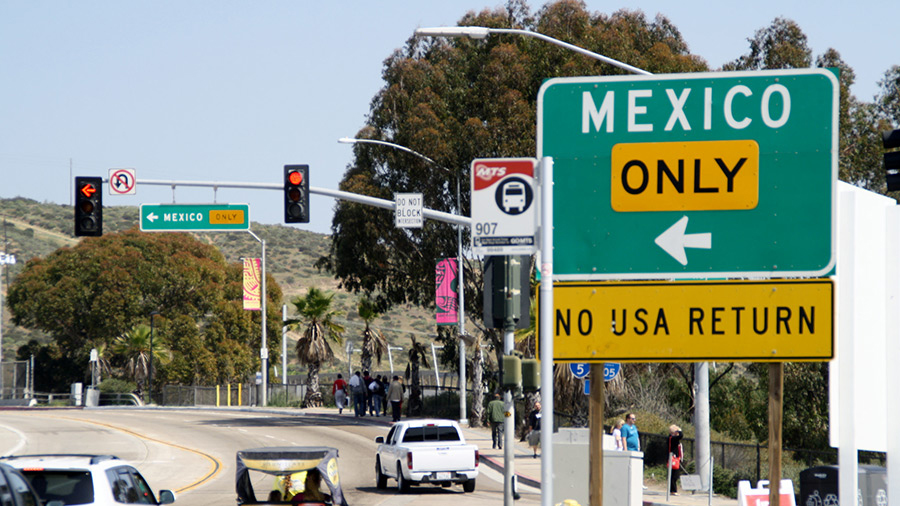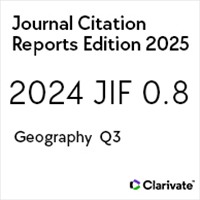Causas e impactos de la deportación de migrantes centroamericanos de Estados Unidos a México
Causes and impacts of the deportation of Central American immigrants from the United States to Mexico
https://doi.org/10.21670/ref.2015.31.a09
Palabras clave:
deportación, migrantes indocumentados, Centroamérica, Estados Unidos, TamaulipasResumen
Durante la última década el número de migrantes expulsados con una orden de deportación de Estados Unidos a México casi se ha duplicado. No todos los migrantes deportados a México tienen nacionalidad mexicana, algunos son ciudadanos de países centroamericanos. Este artículo, fundamentado en una metodología cualitativa que incluye entrevistas en profundidad a 75 migrantes centroamericanos que fueron deportados de los Estados Unidos, analiza las causas y el efecto de la deportación de inmigrantes centroamericanos de Estados Unidos a México y concluye que estas deportaciones pueden conducir a un incremento de la violencia en México.Abstract Over the last decade, the number of immigrants deported from the United States to Mexico based on an order of removal has hearly doubled. Not all migrants removed to Mexico are Mexican citizens, some are Central America citizens. This article, usins qualitative methods that includes in-depth interviews with 75 Central American migrants who were deported from the United States, examines the causes and impacts of the deportation of Central American immigrants from United States to Mexico and concludes that these deportations led to increase in violence in Mexico.
Citas
Alarcón, R. y Becerra, W. (2012). ¿Criminales o víctimas? La deportación de migrantes mexicanos de Estados Unidos a Tijuana, Baja California. Norteamérica, 7(1), 125-148.
Aberson, D. F. (1974). Deportations of Aliens for Criminal Convictions. Pepperdine Law Review, 2(52), 52-82.
Blanchard, S., Hamilton, E. R., Rodríguez, N. y Yoshioka, H. (2011). Shifting trends in Central American migration: A Demographic examination of increasing Honduran-U.S. immigration and deportation. The Latin Americanist, 55(4), 61-84.
Borjas, George J. (1994). The Economics of Immigration. Journal of Economic Literature, 32, 1667-1717.
Borjas, G. J. (2003). The Labor Demand Curve is Downward Sloping: Reexamining the Impact of immigration on the Labor Market. The Quarterly Journal of Economics, 118(4), 1335-1374.
Borjas, G. J. (2006). Immigrants In, Wages Down. How to do the figuring. National Review, 58(8), 40-42.
Brabeck, K. M., Lykes, M. B. y Hershberg, R. (2011). Framing immigration to and deportation from the United States: Guatemalan and Salvadoran families make meaning of their experiences. Community, Work and Family, 14(3), 275-296.
Casillas, R. (2011). The Dark Side of Globalized Migration: The Rise and Peak of Criminal Networks. The Case of Central Americans in Mexico. Globalizations, 8(3), 295-310.
Champlin, D. (2010). Institutionalist Perspectives on Immigration Policy: An Update. Journal of Economic Issues, 44(2), 301-312.
Chiswick, B. R. (1988). Illegal Immigration and Immigration Control. The Journal of Economic Perspectives, 2(3), 101-115.
De León, J. (2013). The Efficacy and Impact of the Alien Transfer Exit Programme: Migrant Perspectives from Nogales, Sonora, Mexico. International Migration, 51(2), 10-23.
Del Ángel, P., Flores, E., Martínez, L., Moreno, J., Navarrete, B. y Siu, E. (2013). Segundo Informe: Violaciones a derechos humanos de personas migrantes mexicanas detenidas en los Estados Unidos 2011-2012. México: Programa de Defensa e Incidencia Binacional.
Department of Homeland Security. (2011). 2011 Yearbook of Immigration Statistics. Recuperado de http://www.dhs.gov/sites/default/files/publications/immigration -statistics/yearbook/2011/ois_yb_2011.pdf.
Escobar, M. (2011). Irrecuperable Border Subjects: Imprisoned Latina Migrants and the Added Difficulties of Accessing Parole. En J. Akers y E. Davalos (Eds.), Wounded Border. Readings on the Tijuana/San Diego Region and Beyond (pp. 79-91). San Diego: City Works Press,.
Galbraith, J. K. (1979). The Nature of Mass Poverty. Cambridge: Harvard University Press.
Gallagher, A. T. (2010). The International Law of Human Trafficking. New York: Cambridge University Press.
Gordon, W. (1975). A case for a less restrictive border policy. Social Science Quarterly, 56(3), 485-491.
Hagan, J., Eschbach, K. y Rodríguez, N. (2008). US Deportation Policy, Family Separation, and Circular Migration. The International Migration Review, 42(1), 64-88.
Hagan, J., Castro, B. y Rodríguez, N. (2010). The effects of U.S. deportation policies on immigrant families and communities: Cross-border perspectives. North Carolina Law Review, 88, 1799-1824.
Hagan, J., Rodríguez, N. y Castro, B. (2011). Social effects of mass deportations by the United States government, 2000-10. Ethnic and Racial Studies, 34(8), 1374-1391.
Hernández, K. L. (2010). Migra! A History of the U. S. Border Patrol. Los Angeles: University of California Press.
Izcara, S. P. (2010a). Los factores no salariales en la migración internacional: el caso tamaulipeco. Revista de Ciencias Sociales, 16(4), 605-615.
Izcara, S. P. (2010b). Redes migratorias o privación relativa: La etiología de la emigración tamaulipeca a través del programa H-2A. Relaciones, 31(122), 245-278.
Izcara, S. P. (2014). Manual de investigación cualitativa. México: Editorial Fontamara.
King, D. S. y Smith, R. M. (2005). Racial Orders in American Political Development. American Political Science Review, 99(1), 75-92.
Ley general para prevenir, sancionar y erradicar los delitos en materia de trata de personas y para la protección y asistencia a las víctimas de estos delitos. (2012). Diario Oficial de la Federación.
Lyon, B. (2010). The unsigned United Nations migrant worker rights convention: An overlooked opportunity to change the "Brown collar" migration paradigm. International Law and Politics, 42, 389-500.
Mejía, J. A. (2011). Migrantes deportados: entre la concepción de los desechos humanos y la de los derechos humanos. Encuentro, 88, 72-85.
Menjívar, C. y Abrego, L. J. (2012). Legal Violence: Immigration Law and the Lives of Central American Immigrants. American Journal of Sociology, 117(5), 1380-1421.
OHCHR (United Nations High Commissioner for Human Rights). (1990). International Convention on the protection of the rights of all migrant workers and members of their families adopted by General Assembly resolution 45/158 of 18 December 1990. Recuperado de http://www2.ohchr.org/english/bodies/cmw/cmw.htm
Piore, M. J. (1979). Birds of Passage: Migrant Labour and Industrial Societies. Cambridge: Cambridge University Press.
Rosenblum, M. R. (2012). Border Security: Immigration Enforcement Between Ports of Entry. Congressional Research Service report for Congress. Federal Publications. (Paper 878). Recuperado de http://digitalcommons.ilr.cornell.edu/cgi/viewcontent.cgi?article= 1883&context= key_workplace
Secretaría de Relaciones Exteriores. (Diciembre, 2005). Mecanismos de Repatriación entre agencias federales de EE.UU. y México. Duodécimo Foro Legislativo, El Paso, Texas.
Shaw, I. F. (2003). La evaluación cualitativa. Introducción a los métodos cualitativos. Barcelona: Paidós Básica.
UNODC (United Nations Office on Drugs and Crime). (2004). Protocol to Prevent, Suppress and Punish Trafficking in Persons, Especially Women and Children, supplementing the United Nations Convention against Transnational Organized Crime adopted by General Assembly resolution 55/25 of 15 November 2000. Recuperado de https://www.unodc.org/documents/middleeastandnorthafrica//organised-crime/UNITED_NATIONS_CONVENTION_AGAINST_TRANSNATIONAL_ORGANIZED_CRIME_AND_THE_PROTOCOLS_THERETO.pdf
Wainer, A. (2012). Exchanging people for money: Remittances and repatriation in Central America. Bread for the World Institute Briefing Paper, 18, 1-18.
Zarco, D. (2013). Analogía y problemática de la migración femenina centroamericana. En I. García y A. Munguía (Eds.), Migraciones globales. Experiencias regionales y enseñanzas para México (pp. 61-84). México, D. F: Jorale.
































